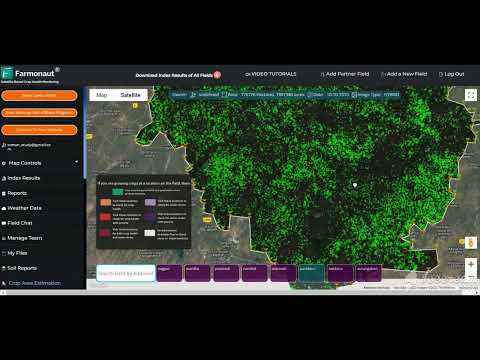North Dakota Energy Regulation Shake-Up: Key Infrastructure and Siting Changes on the Horizon
“North Dakota’s Senate Energy Committee rejected a proposal affecting infrastructure funds for local governments opposing state-approved projects.”
As we delve into the latest developments in North Dakota’s energy landscape, we find ourselves at the cusp of significant regulatory changes that will shape the future of energy production, infrastructure development, and regulatory processes in the state. The ongoing legislative discussions have brought to light crucial issues surrounding energy regulation, infrastructure funding, and the delicate balance between state and local authorities in approving energy projects.
In this comprehensive analysis, we’ll explore the potential impacts of these changes on various stakeholders, including the energy industry, local governments, and the public. We’ll also examine how these shifts align with broader trends in energy policy and what they mean for North Dakota’s position as a key player in the nation’s energy sector.
The Shifting Landscape of North Dakota Energy Regulation
North Dakota, known for its rich natural resources and significant contributions to the nation’s energy production, is facing a critical juncture in its regulatory framework. Recent legislative actions and debates have highlighted the need for a careful recalibration of energy policies to address emerging challenges and opportunities in the sector.
Let’s break down the key areas of change and their potential implications:
1. Infrastructure Funding and Local Government Authority
One of the most contentious issues in the recent legislative session has been the proposal to withhold infrastructure funding from local governments that oppose state-approved energy projects. This measure, which was part of Senate Bill 2208, aimed to ensure that localities benefiting from oil and gas tax revenues through the Operation Prairie Dog initiative wouldn’t impede critical infrastructure development.
However, the Senate Energy Committee recommended against this proposal, highlighting the complex dynamics between state and local interests in energy development. This decision reflects a recognition of the importance of local autonomy and the need for collaborative approaches in energy project siting.

The rejection of this proposal signifies a potential shift towards more balanced approaches in resolving conflicts between state energy goals and local concerns. It also underscores the ongoing challenge of aligning diverse interests in energy infrastructure development across North Dakota’s varied communities.
2. Data Center Power Regulations
Another significant development has been the conversion of a bill focused on data center power regulations into a study. This change addresses growing concerns about the potential strain on the power grid from large-scale data centers, which have energy demands comparable to small cities.
“The North Dakota House converted a bill on data center power regulations into a study, addressing grid strain concerns.”
The decision to conduct a study rather than implement immediate regulations reflects the complexity of balancing technological advancement with energy infrastructure capacities. It also highlights North Dakota’s proactive approach to addressing emerging challenges in the rapidly evolving data center industry.
This move could have far-reaching implications for:
- Future investment in data centers and tech infrastructure in North Dakota
- The state’s ability to attract and manage high-energy-demand industries
- Long-term planning for power grid capacity and resilience
3. Public Service Commission Reforms
The proposal to increase the number of seats on the North Dakota Public Service Commission (PSC) from three to five and change the election process to a district-based system was not recommended to pass. This decision maintains the current structure of the PSC, which plays a crucial role in overseeing utility regulations, energy infrastructure approvals, and various other regulatory functions.
The rejection of this proposal indicates a preference for stability in the regulatory body’s composition and election process. However, it also raises questions about the PSC’s capacity to handle increasingly complex and contentious energy projects, especially as North Dakota continues to play a pivotal role in national energy production.
Comparative Analysis of North Dakota Energy Regulation Changes
| Regulatory Area | Current Policy | Proposed Changes | Potential Impact on Industry | Stakeholder Positions |
|---|---|---|---|---|
| Infrastructure Funding | Operation Prairie Dog funds distributed to non-oil producing counties | Withhold funds from local governments opposing state-approved projects | High – Could accelerate project approvals | State: Support Local Governments: Oppose Energy Companies: Support |
| Data Center Power Regulations | No specific siting process for data centers | Study on potential siting process and grid impact | Medium – May affect future data center investments | State: Neutral Utilities: Concerned Tech Companies: Cautious |
| Public Service Commission Structure | 3 commissioners, statewide elections | Increase to 5 commissioners, district-based elections | Low – Minimal direct industry impact | State: Mixed Public: Mixed Industry: Neutral |
| Local Government Authority | Some local control over energy project approvals | Potential reduction in local authority for state-approved projects | High – Could streamline project approvals | State: Support Local Governments: Strongly Oppose Energy Companies: Strongly Support |
| Renewable Energy Siting | Subject to current PSC approval process | No significant changes proposed | Low – Status quo maintained | State: Neutral Renewable Energy Sector: Neutral Public: Mixed |
This comparative analysis highlights the multifaceted nature of the proposed changes in North Dakota’s energy regulation landscape. It’s clear that while some areas are seeing significant potential shifts, others remain relatively stable. The varying impacts across different stakeholders underscore the complexity of balancing diverse interests in energy policy-making.
Implications for North Dakota’s Energy Future
The ongoing debates and legislative actions in North Dakota have far-reaching implications for the state’s energy sector and its role in the broader national energy landscape. Let’s explore some of these potential impacts:
1. Oil and Gas Production
North Dakota has been a major player in U.S. oil and gas production, particularly with the development of the Bakken shale formation. The proposed regulatory changes could significantly influence the future of this industry in the state:
- Infrastructure Development: The decision not to penalize local governments opposing state-approved projects might lead to more negotiation and compromise in infrastructure development. This could potentially slow down some projects but might result in more sustainable and community-supported developments in the long run.
- Investment Climate: The regulatory environment plays a crucial role in attracting investment. A balanced approach that considers both industry needs and local concerns could enhance North Dakota’s appeal to energy companies looking for stable, long-term operational environments.

2. Renewable Energy Projects
While much of the focus has been on traditional energy sources, the regulatory changes also have implications for renewable energy projects in North Dakota:
- Wind and Solar Power: The decision not to include wind and solar generators in the proposed infrastructure funding restrictions could be seen as a positive signal for renewable energy development in the state.
- Balancing Act: North Dakota faces the challenge of supporting its established oil and gas industry while also fostering growth in renewable energy sectors. The evolving regulatory framework will play a crucial role in striking this balance.
For those interested in exploring how technology is revolutionizing land use in agriculture, which often intersects with energy production in rural areas, check out this informative video:
3. Grid Infrastructure and Reliability
The focus on data center power regulations highlights growing concerns about grid stability and capacity:
- Future-Proofing the Grid: By studying the impact of large power consumers like data centers, North Dakota is taking proactive steps to ensure its power infrastructure can meet future demands.
- Balancing Economic Growth and Energy Stability: The state must navigate the delicate balance between attracting high-tech industries and maintaining a reliable power supply for all consumers.
4. Local vs. State Authority
The tension between state and local authorities in energy project approvals remains a key issue:
- Collaborative Approaches: The rejection of proposals to penalize local governments may lead to more collaborative approaches in project siting and approval processes.
- Community Engagement: There may be an increased focus on engaging local communities early in the planning stages of energy projects to address concerns and build support.
The Role of Technology in North Dakota’s Energy Future
As North Dakota navigates these regulatory changes, technology will play an increasingly important role in shaping the state’s energy landscape. Advanced monitoring and management systems, like those offered by companies such as Farmonaut, can provide valuable insights for both energy production and agricultural land use, which often intersect in rural areas.
Farmonaut’s satellite-based farm management solutions, while primarily focused on agriculture, demonstrate the kind of technological innovation that could benefit the energy sector. For instance, their real-time monitoring capabilities could be adapted to track environmental impacts of energy projects or optimize land use for both agricultural and energy production purposes.
To learn more about how technology is transforming land management and could potentially impact energy-related land use decisions, visit Farmonaut’s web app or explore their API solutions.
For those interested in mobile solutions, Farmonaut offers both Android and iOS apps:
The Intersection of Agriculture and Energy in North Dakota
North Dakota’s economy is heavily influenced by both agriculture and energy production. As the state grapples with energy regulation changes, it’s crucial to consider the impact on agricultural lands and rural communities:
- Land Use Conflicts: Energy projects, particularly large-scale renewable installations, can compete with agricultural land use. Balanced regulations will be key to managing these potential conflicts.
- Economic Diversification: The regulatory changes could influence how rural communities balance traditional farming with potential income from energy projects on their lands.
- Technological Synergies: Advancements in agricultural technology, such as those offered by Farmonaut, could provide valuable data for energy project planning and environmental impact assessments.
For a deeper understanding of how technology is transforming agricultural practices, which could inform energy land use decisions, watch this informative video:
Public Engagement and Transparency in Energy Regulation
As North Dakota’s energy regulatory landscape evolves, public engagement and transparency will be crucial factors in ensuring successful implementation and acceptance of new policies:
- Community Involvement: The rejection of proposals that would have limited local government authority suggests a continued emphasis on community involvement in energy project decisions.
- Education and Outreach: There may be increased need for public education initiatives to help citizens understand the complexities of energy regulation and its impacts on their communities.
- Data-Driven Decision Making: Utilizing advanced data analytics and monitoring tools, similar to those used in precision agriculture, could enhance transparency and inform public discussions on energy projects.
To explore how AI and data analytics are transforming decision-making processes in agriculture, which could have parallels in energy sector management, watch this insightful video:
Environmental Considerations in North Dakota’s Energy Future
As North Dakota navigates these regulatory changes, environmental considerations will play an increasingly important role:
- Balancing Development and Conservation: The state must find ways to support energy development while protecting its natural resources and agricultural lands.
- Emissions Reduction: Future regulations may need to address greenhouse gas emissions from the energy sector, potentially impacting both traditional and renewable energy projects.
- Water Management: Given the water-intensive nature of some energy production methods, regulations may need to address water use and protection more comprehensively.
Technologies that provide real-time environmental monitoring, such as those used in precision agriculture, could be valuable tools in managing the environmental impacts of energy projects. For instance, Farmonaut’s satellite-based monitoring systems, while designed for agricultural use, demonstrate the kind of technology that could be adapted for environmental monitoring in energy production areas.
The Future of North Dakota’s Energy Workforce
The evolving regulatory landscape will likely have significant implications for North Dakota’s energy workforce:
- Skills Adaptation: As regulations change and new technologies emerge, there will be a growing need for workforce training and skills development in the energy sector.
- Job Diversification: Changes in the energy landscape may lead to new job opportunities, particularly in areas where renewable energy projects are developed.
- Rural Employment: The interplay between energy projects and agricultural lands could create unique employment opportunities in rural areas.
For those interested in exploring opportunities in the evolving energy and agricultural technology sectors, Farmonaut offers an affiliate program that could be of interest:
Earn With Farmonaut: Affiliate Program
Earn 20% recurring commission with Farmonaut’s affiliate program by sharing your promo code and helping farmers save 10%. Onboard 10 Elite farmers monthly to earn a minimum of $148,000 annually—start now and grow your income!
Conclusion: Navigating the Changing Tides of North Dakota Energy Regulation
As we’ve explored throughout this analysis, North Dakota stands at a critical juncture in its energy regulatory landscape. The decisions made today will shape the state’s energy future, impacting everything from oil and gas production to renewable energy development, grid infrastructure, and the delicate balance between state and local authorities.
Key takeaways include:
- The rejection of proposals to penalize local governments opposing state-approved projects signals a continued emphasis on collaborative approaches to energy development.
- The focus on studying data center power regulations demonstrates North Dakota’s proactive stance in addressing emerging challenges in the energy sector.
- The intersection of energy and agriculture remains a crucial consideration, with potential for technological synergies and balanced land use strategies.
- Environmental considerations and workforce development will play increasingly important roles in shaping North Dakota’s energy future.
As North Dakota continues to navigate these complex issues, stakeholders across the energy sector, government, and local communities will need to work together to forge a path that balances economic development, environmental stewardship, and community interests. The evolving regulatory framework will be crucial in determining how North Dakota maintains its position as a key player in the nation’s energy landscape while adapting to the challenges and opportunities of the future.
FAQ Section
- Q: How will the proposed changes affect North Dakota’s oil and gas industry?
A: While the rejection of proposals to penalize local governments may lead to more negotiation in project approvals, it also ensures a more collaborative approach that could result in more sustainable, community-supported developments in the long run. - Q: What impact will these changes have on renewable energy projects in North Dakota?
A: The regulatory changes seem to maintain a relatively neutral stance on renewable energy, potentially providing opportunities for growth in this sector alongside traditional energy sources. - Q: How does the focus on data center power regulations affect North Dakota’s tech industry?
A: The decision to study data center power impacts rather than implement immediate regulations shows a cautious approach that balances attracting tech investment with ensuring grid stability. - Q: What role will local governments play in future energy project approvals?
A: Local governments are likely to maintain significant influence in project approvals, with an emphasis on collaboration and early community engagement in the planning process. - Q: How might these regulatory changes affect North Dakota’s position in the national energy landscape?
A: These changes reflect North Dakota’s efforts to maintain its strong position in energy production while adapting to new challenges and opportunities, potentially enhancing its role as a forward-thinking energy state.





